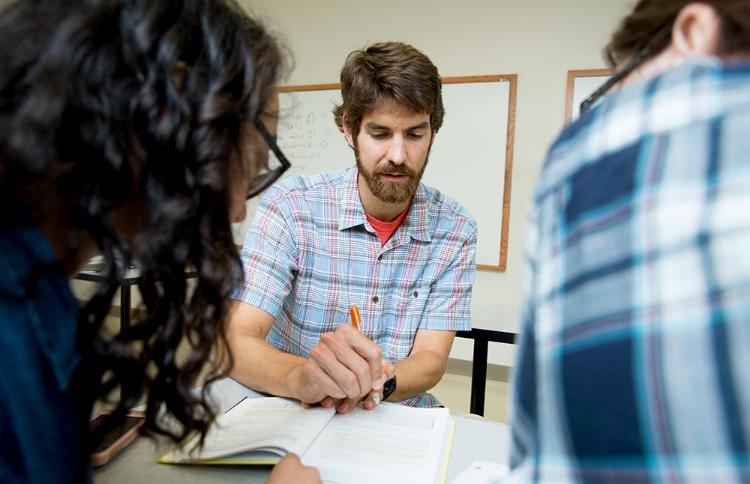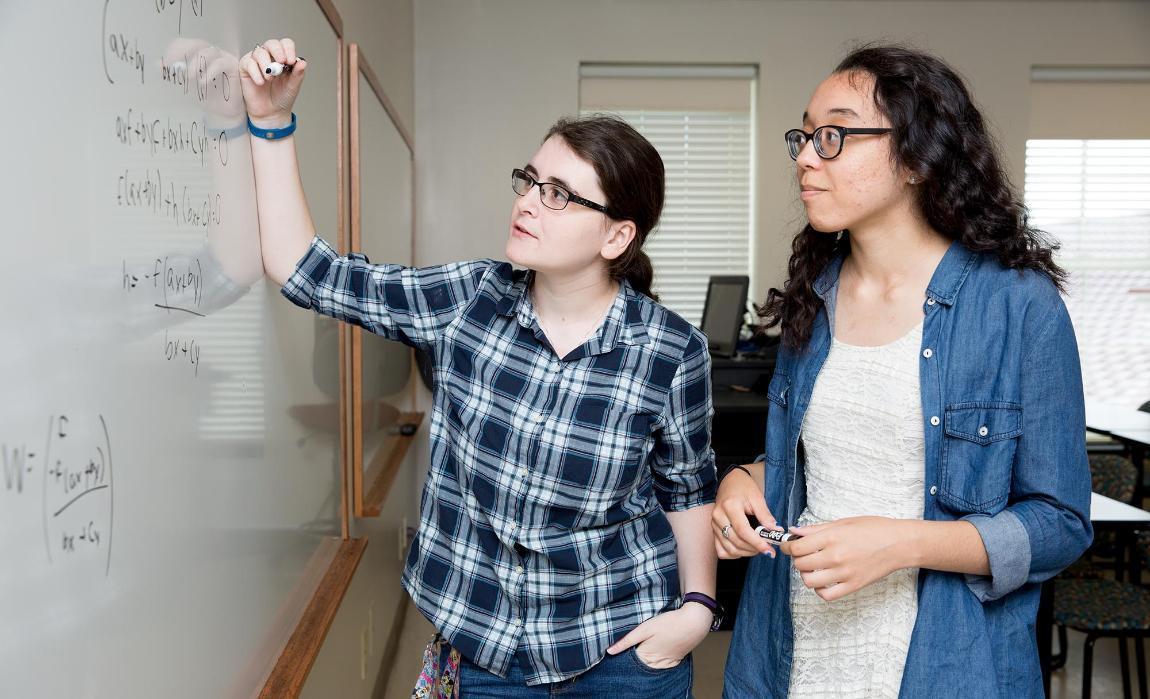So far there are no fatalities, but the research two math students are undertaking this summer may leave them “gasping for air” before it’s all over, predicts their professor with a wry smile.
Just trying to decipher a basic definition of Lorentzian geometry—the focus of their research—would likely have a similar effect on the average person. (That’s why we won’t try to explain it here. You can thank us later.)
Proving they are true scholars, Nicole Marzolf ’18 and Breana Figueroa ’19, both math majors and members of the Cormier Honors College, have found the work fun.
“I like being challenged. I knew going in that it would be challenging,” said Marzolf, also majoring in physics. “This project involves a solid amount of work, but there’s a satisfaction that we’re able to play with a problem and get an answer.”
The pair’s research in the PRISM program combines Lorentzian geometry with a form of linear algebra known as Lie algebra. It’s a continuation of a project last summer, one of four PRISM projects that Dr. Tom Wears, assistant professor of mathematics, has directed since he began researching this topic in 2014.

“Lorentzian geometry is interesting to learn. It’s fun thinking about these things in a different way,” said Marzolf. “Dr. Wears gives us a problem and we have to play with it for a while. It’s hard, but he helps us when we get stuck.”
Figueroa and her partner work collaboratively on a whiteboard in a classroom. “We like to bounce ideas off each other,” she said, which Wears considers a good approach.
“Students are less hesitant, less reserved, about discussing things with each other,” he said. “And I like to discuss things with them. I like not just written but also oral results. I want them to give me the simplest representation from something that’s abstract.
“They have to rely on some geometric insight, but they’re doing really well,” added Wears, a geometer. “Lorentzian geometry is new to them; it’s not something that undergraduates are exposed to. I’m trying to sharpen their instincts with two- and three-dimensional examples. The goal is to get them out of a textbook.”
Figueroa plans to be a secondary math teacher, and Marzolf is considering teaching on the university level or working in the Navy’s nuclear program. “I’m going to grad school, and, thanks to PRISM, I will understand how research works,” said Marzolf, who will do research this fall on mathematical physics under Dr. Michelle Parry, associate professor of physics.
Wears plans to eventually put the pair to work on examples that even he hasn’t yet solved. “In a few weeks, they’ll be on their own—swimming upstream and probably gasping for air,” he said.



Leave a Comment